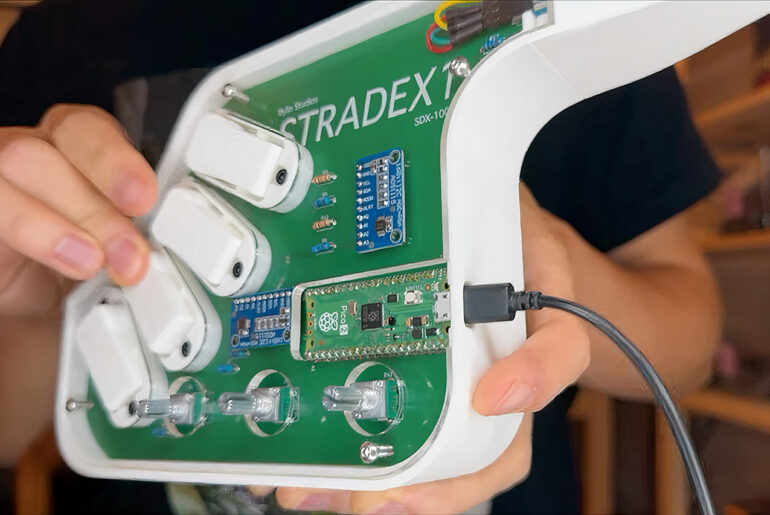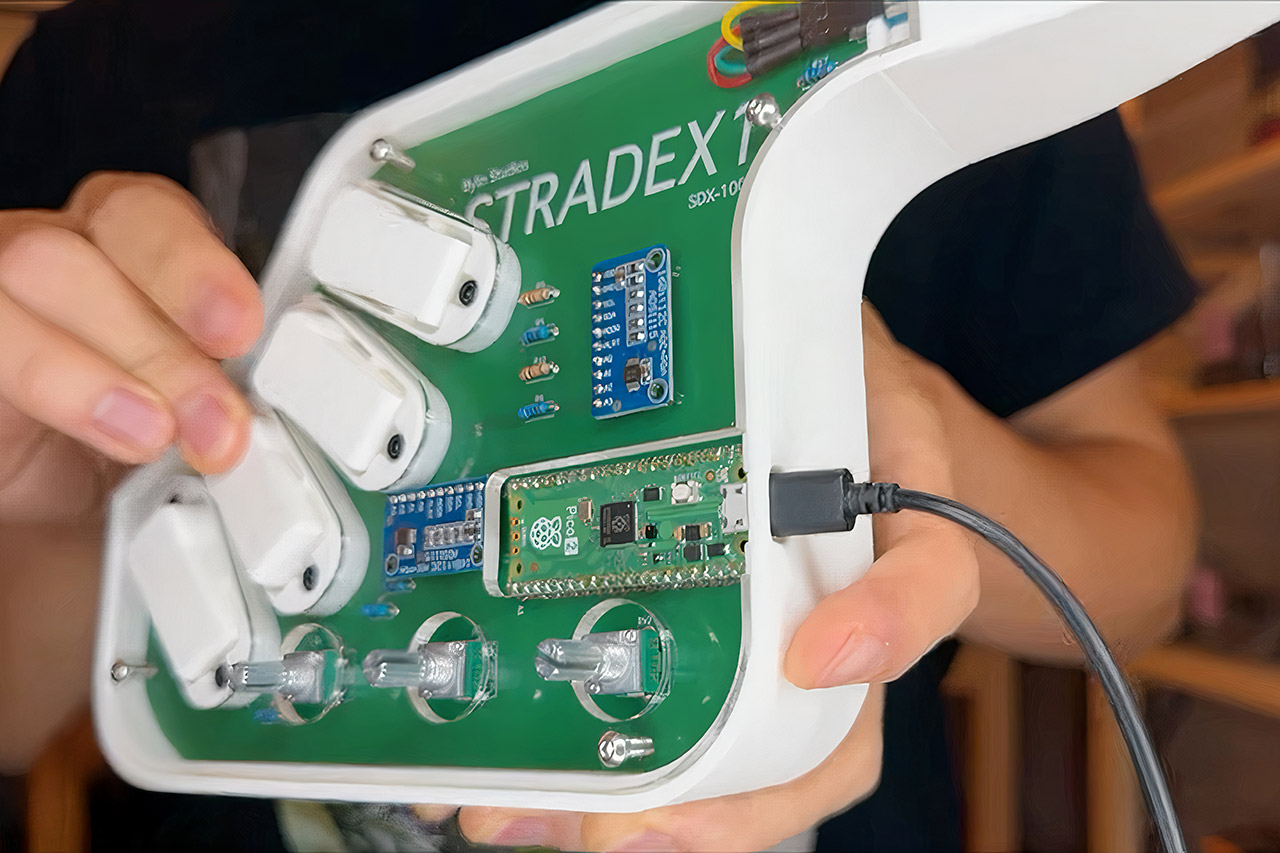
Brady Y. Lin treats the Stradex1 like an old friend; it’s been four years since he originally attempted to create a violin simulator – a box of buttons that created chiptune sounds. Lin, a beginner maker at the time, coaxed square waves out an Arduino, imitating strings with discrete presses that locked pitches into stiff steps. Lin is now halfway through his electrical engineering degree and has turned his aggravation into something playable, portable, and free for anybody to print and assemble.
After four years of developing his talents and vision, the first violin knockoff featured seven buttons for finger positions, just enough to draw notes but not in between. Lin spent months sketching concepts, discarding some that were too rigid or confusing. He settled on a SoftPot, an 8.5-inch ribbon of resistive material that wraps around the neck like a genuine fingerboard. When you press a finger anywhere along its length, it registers position with 32,000 potential gradations, allowing you to trace every millimeter of the slide without missing a beat.
- [FOR CREATIVE PROJECTS] Create, draw, doodle, and build in 3D with this versatile, high-quality 3D pen. The SCRIB3D P1 enhances spatial thinking,...
- [READY-TO-USE KIT] Includes 3 colors (30 feet) of PLA plastic to keep you Doodling for ages, as well as a power adapter, step-by-step manual, and a...
- [BEGINNER FRIENDLY] Plug the adapter into the back of the pen and choose your filament. The red light will turn on indicating warm up, this will take...
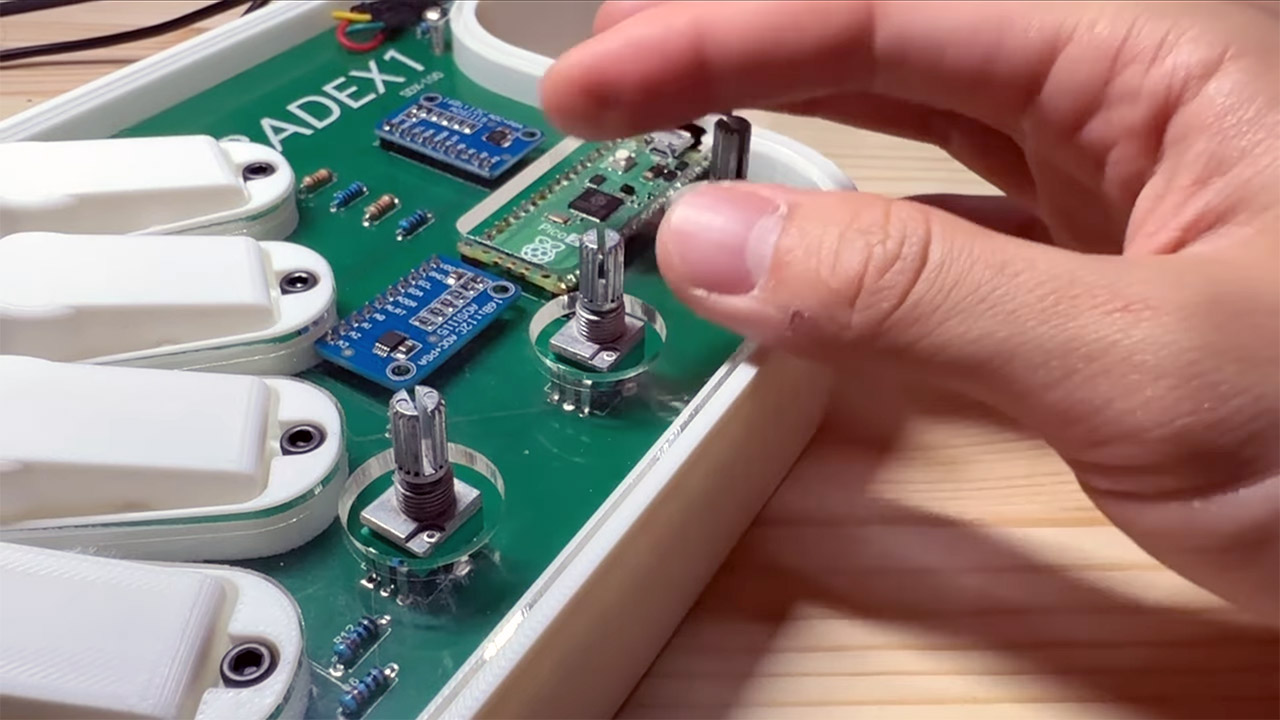
In the center is a Raspberry Pi Pico 2, a credit card-sized board that can process inputs more quickly than Lin’s prior configuration. It reads the SoftPot with an ADS1115 chip, a high-precision analog-to-digital converter that samples data 200 times per second over multiple channels. Two of these boards handle the load, filtering out noise with techniques like low pass smoothing and hysteresis to prevent jittery false noises. Lin had to deal with defective chips during testing, switching them out until the readings stabilized. The firmware, developed in C for the Pico SDK, decides when to deliver MIDI commands, disregarding little twitches but recording deliberate pushes. When you connect it to a computer or synthesizer, it speaks the global language of music production, triggering sounds ranging from orchestral strings to electric guitars without needing a single speaker connection.
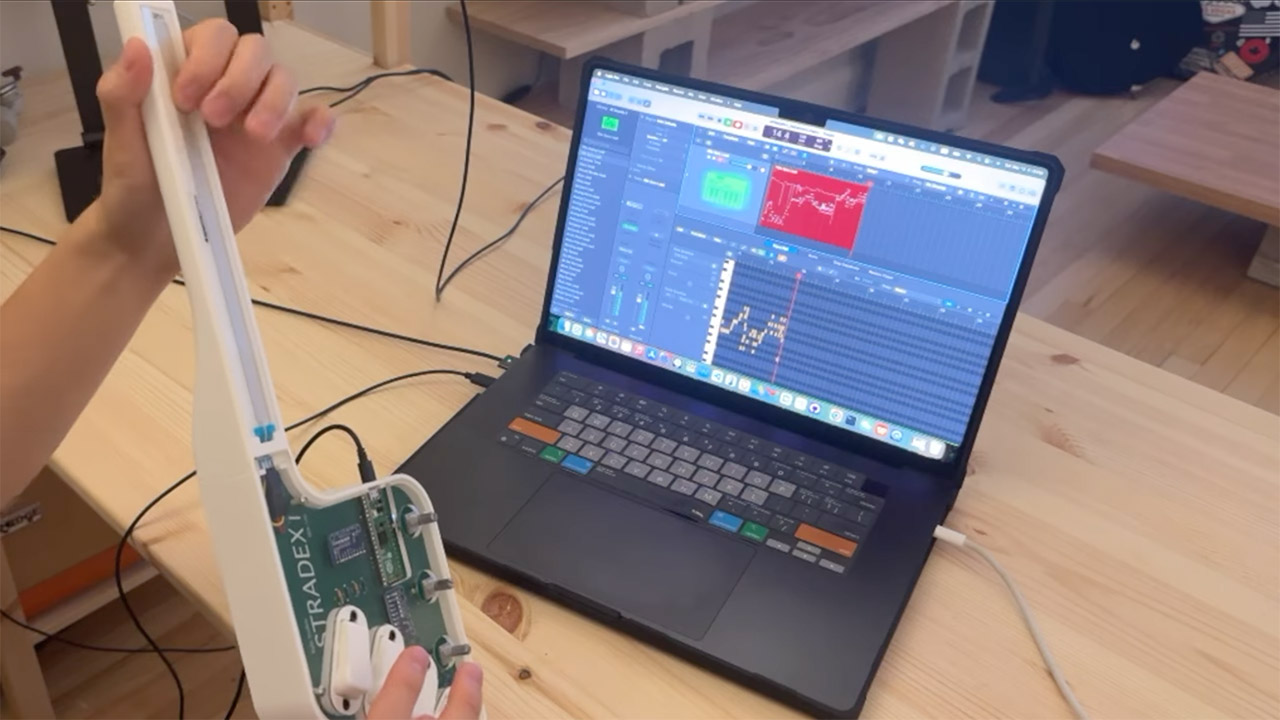
The body is lined with four keys, one for each of the violin strings. Soft tactile switches beneath them generate the initial click of contact, while force-sensing resistors (thin films that change resistance under pressure) measure how hard you press. A light touch produces a whisper, while a larger press produces a roar, allowing you to choose the volume. Lin worked on these keys until they clicked into place and delivered accurate, consistent feedback. A satisfying snap with each downstroke benefits both the ear and the hand. Three additional knobs hang from the side, each cranked for further control: one modifies the basic tuning by four octaves, another regulates effects such as reverb, and the third controls specific characteristics.
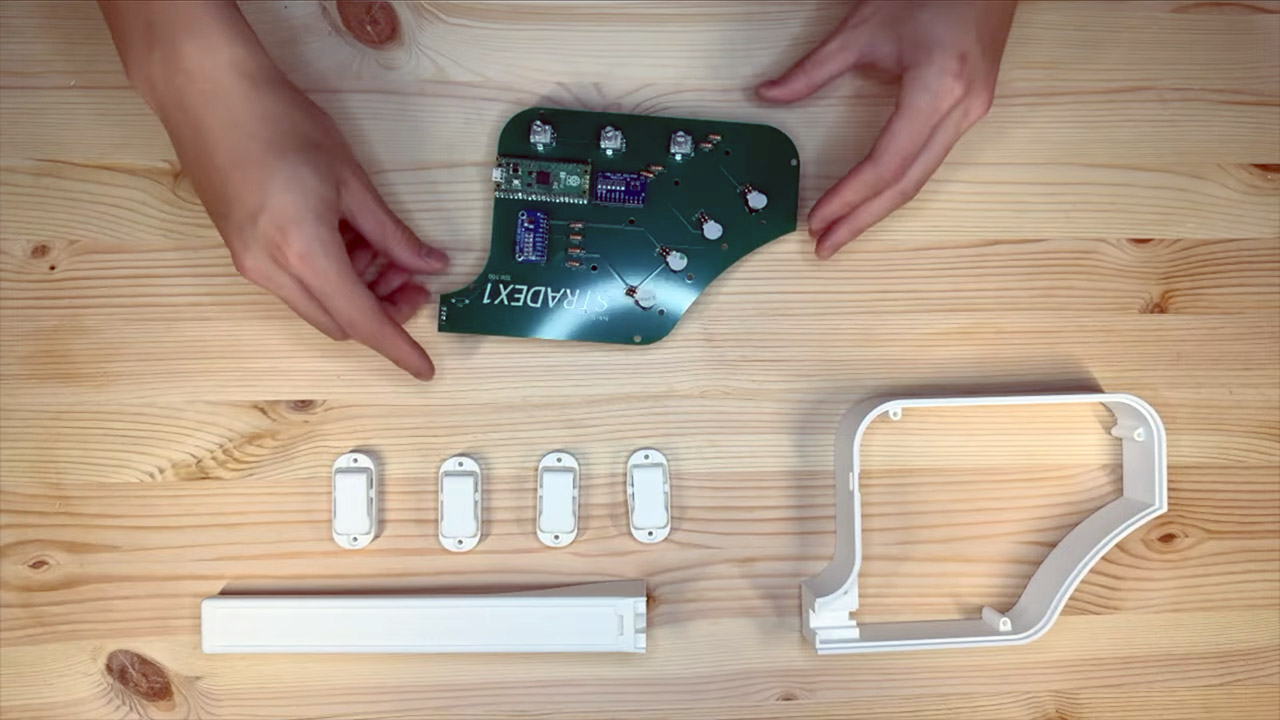
Lin provides 3MF files for the chassis which is a tiny frame the size of a thick paperback with slots for the neck and body plates. Slice them with PrusaSlicer, feed the filament into a machine and see the parts pop out in hours. A DXF file guides laser cutters through 1/8″ acrylic to make glossy guards that sandwich the electronics; if you don’t have a cutter you can extrude the forms in CAD and print them.
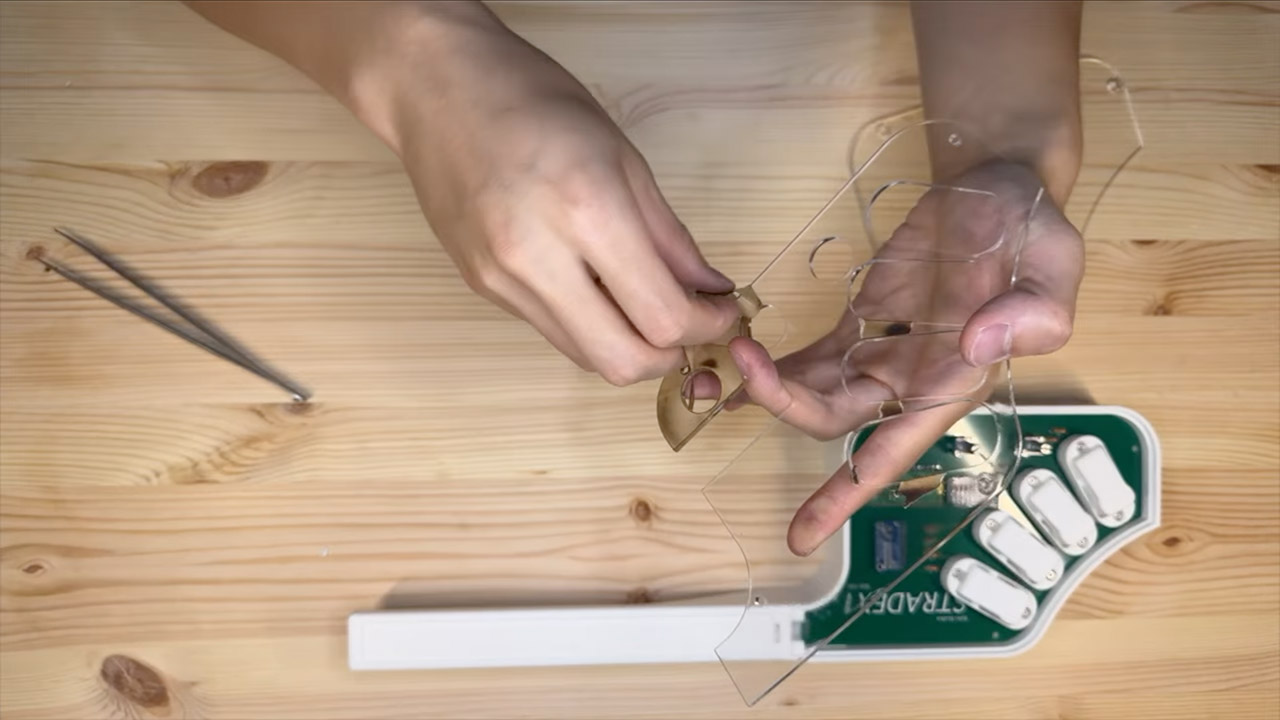
The Pico gets power via USB and boots as a MIDI device, ready for DAWs like Ableton or hardware synths. Most of Lin’s parts cost less than $100, including one Pico, the SoftPot strip, two ADCs, three 10k pots, four force sensors and pushbuttons, a few resistors and hardware bits. Search AliExpress or Digi-Key and the parts will arrive in days. Every file is on GitHub, including prints, cuts, boards and code.
[Source]

